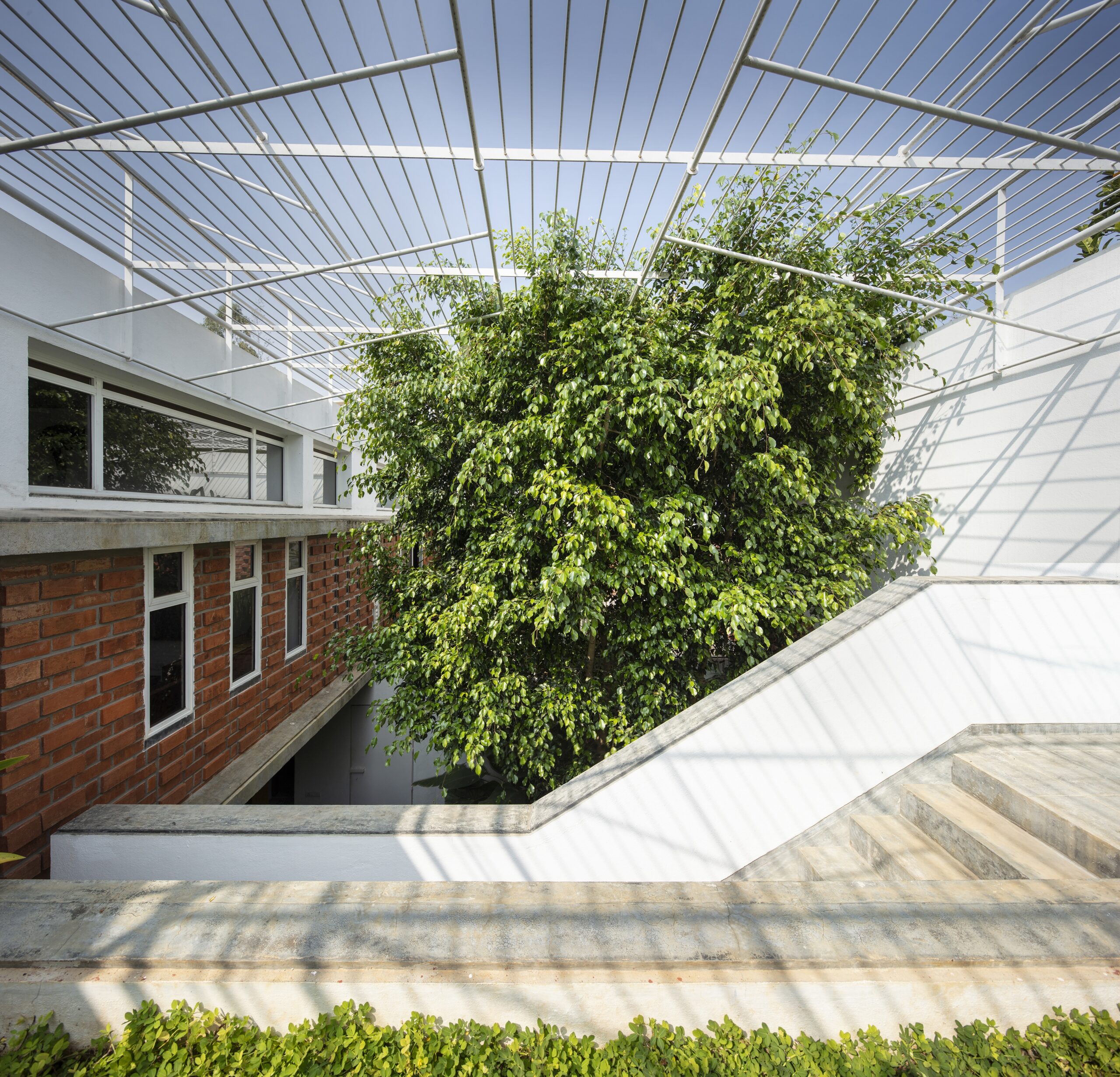Grand Egyptian Museum reaches completion in Giza


Dublin studio Heneghan Peng Architects has reached completion on the long-awaited Grand Egyptian Museum in Giza, more than three decades after plans for the project were announced.
Sprawled across a 50,000-square-metre site close to the Pyramids of Giza, the colossal museum houses more than 100,000 pharaonic antiquities – many that have never been made public before.
It has a total floor area of 81,000 square meters and, according to Heneghan Peng Architects, is the "largest museum in the world dedicated to a single civilisation".

"Designing a museum of this calibre, in such close proximity to a landmark as monumental and symbolic as the pyramids, is a once-in-a-lifetime opportunity," said Heneghan Peng Architects's co-founder Róisín Heneghan.
"Our design works to strengthen that connection to history and place, providing a home for some never-before-seen artifacts that rests upon the very land from which they were created," she continued.
"The result is an experience that evokes a sense of awe at the breadth and depth of ancient Egypt’s fascinating history in a way that feels both modern and timeless."

The Grand Egyptian Museum, also known as Giza Museum, has been in development since 1992 when the site for the project was allocated by former president Hosni Mubarak, approximately two kilometres away from the Pyramids of Giza.
Heneghan Peng Architects won an international competition to design it in 2003 with engineering by UK firms Arup and Buro Happold, before construction started in 2012.
The opening date was originally scheduled for 2018, but was delayed due to numerous political and economic setbacks, as well as the Covid-19 pandemic. The building was partly opened in 2024 and will be fully open to the public on 1 November 2025.

Heneghan Peng Architects designed the museum as a giant wedge, built from concrete. Its angular form aligns with the positioning of the three pyramids, which are made visible throughout.
It is wrapped in triangular panels formed from translucent alabaster, Egyptian limestone and glass, and projecting triangular entrances.
The museum's internal walls follow its wedge shape, while the roof slopes upwards to echo the peaks of the pyramids – though it does not surpass them in height.

The heart of the building is a six-story staircase that provides access through the different galleries.
This includes the Tutankhamen gallery on the top level, which will display a collection of more than 5,000 artefacts to the public for the first time.
Among the museum's exhibits are discoveries from the tomb of King Tutankhamun and a 3,200-year-old sculpture of Egyptian pharaoh Rameses II.
The Khufu ship – a type of ritual vessel or "solar barge" – found buried next to the Great Pyramid in 2,500 BC, is also on show.

Alongside the galleries, Heneghan Peng Architects has incorporated a children's museum, a conference centre, an auditorium, a conservation facility and gardens.
The conservation facility, which is connected to the main building via a tunnel, contains 17 different laboratories and is one of the largest in the world, according to the studio.

According to Heneghan Peng Architects, the concrete structure of the museum helps to regulate internal temperatures, minimising the need for air conditioning.
Another giant museum recently featured on Dezeen is the Zaishui Art Museum, a one-kilometre-long building by Japanese architect Junya Ishigami that sits over a lake in China.
Other record-breaking projects to have recently hit headlines include the world's "largest inflatable dome" and the world's largest wooden structure.
The photography is courtesy of the Grand Egyptian Museum unless stated otherwise.
Project credits:
Architect: Heneghan Peng Architects
Local architect: Raafat Millier Consulting
Structural, civic, traffic and facade engineering: Arup
Local structural, civic and traffic engineering: Arab Consulting Engineers
Building services, IT, security, fire and acoustics: Buro Happold
Local building services: Shaker Consulting Engineers
Landscape designer: West 8
Local landscape designer: SITES
Design team management and QS: Davis Langdon
Specialist lighting: Bartenbach Lichlabor
Wayfinding: Bruce Mau Design
Exhibition masterplanning: Metaphor
Museology: Cultural Innovations
The post Grand Egyptian Museum reaches completion in Giza appeared first on Dezeen.





















































